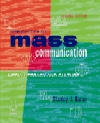There are many theories of mass communication. The paradigms of these theories shift as new technologies and new media are introduced. Mass communication theory has passed through four eras. The era of mass society saw media as all-powerful and audiences as defenseless against their effects. In the era of the scientific perspective, research showed that media affected some people much more strongly than others, often according to social characteristics. The era of limited effects theory included several theories, including attitude change theory and the uses and gratifications approach. Recognizing the power of media effects, theorists discussed agenda setting, dependency theory, and social cognitive theory. Contemporary mass communication theory can be called the era of cultural theory. Media effects are seen as shaped by audience membersí involvement in the process and reality is seen as socially constructed. Gerbnerís cultivation analysis and critical cultural theory are two important examples of contemporary theories. | 


 2002 McGraw-Hill Higher Education
2002 McGraw-Hill Higher Education